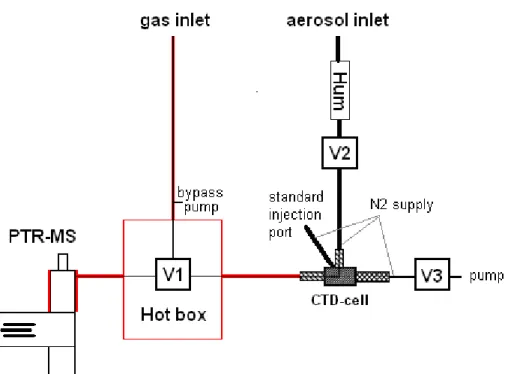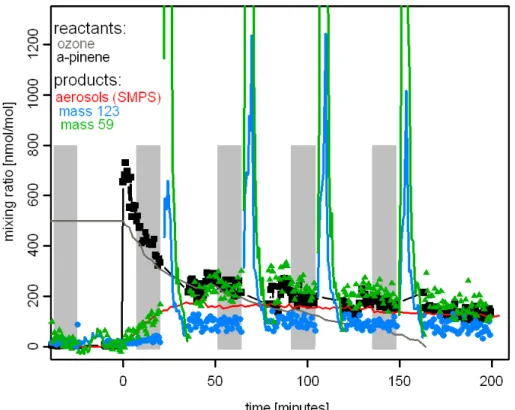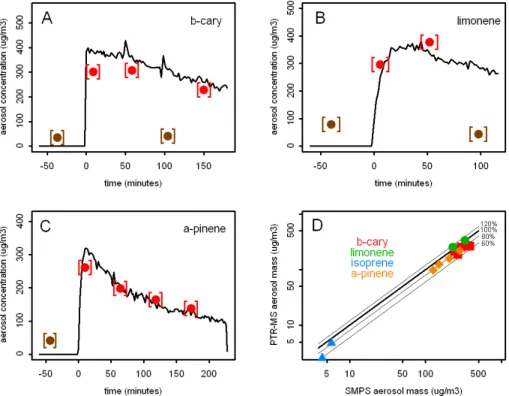Aerosol analysis using a Proton-Transfer-Reaction Thermo-Desorption Mass Spectrometer (PTR-TD-MS): a new approach to study processing of organic aerosols
Texto
Imagem




Documentos relacionados
The volatile and hygroscopic properties of ammonium sulphate seeded and un-seeded secondary organic aerosol (SOA) derived from the photo-oxidation of atmospherically
The experimental data obtained for the particle number concentration are pre- sented together with the simulated profile of 2,5-DHF (from the known initial concentrations and
Products of secondary organic aerosol (SOA) from aromatic volatile organic compounds (VOCs) – 2,3-dihydroxy-4-oxopentanoic acid, dicarboxylic acids, ni- tromonoaromatics,
SOA from a log wood burner, a Euro 2 diesel car and a two-stroke Euro 2 scooter were character- ized with an Aerodyne high-resolution time-of-flight aerosol mass
in AMS data. IEPOX-SOA accounts for 6–34 % of total OA in those studies, signifying the importance of IEPOX-SOA for regional and global OA budgets. Ulbrich et al., 2009) was found
(2011) found that organic aerosol particles measured at the PUY site during summer 2010 were likely linked to biogenic sources: the mass spectra of OOA (oxygenated organic aerosols)
The emission of oxygenated compounds represented around 70 % of total organic aerosol for both types of vehicles measured by the
The real part of the refractive indices and effective densities for chemically segregated ambient aerosols in Guangzhou measured by a single-particle aerosol mass spectrometer..




